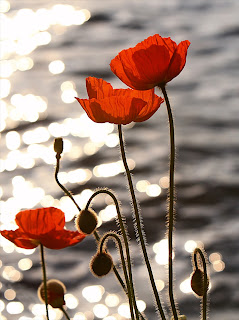The History of Memorial Day
Memorial Day was officially proclaimed in 1868 by General John Logan, national commander of the Grand Army of the Republic, in his General Order No. 11, and was first observed on May 30, 1868, when flowers were placed on the graves of Union and Confederate soldiers at Arlington National Cemetery.
• The first state to officially recognize the holiday was New York in 1873
• 1890 - Memorial Day was recognized by all northern states.
• The South refused to acknowledge the day until after World War I
What changed? The holiday now honors all Americans who died fighting in any war, not just those that died fighting in the Civil War.
• Some southern states still have a separate day honoring the Confederate war dead:
January 19 in Texas
April 26 in Alabama, Florida, Georgia, and Mississippi
May 10 in South Carolina
June 3 in Louisiana and Tennessee, which just happens to be Jefferson Davis' birthday
© Diane Chase is the author of the Adirondack Family Time™ guidebook series. Adirondack Family Time™guidebooks have easy, short Adirondack family hikes for ADK kids, parents, retired, seniors, dog-owners, Adirondack swimming holes, Lake Placid Olympic activities, Adirondack trivia, Adirondack horseback rides, Adirondack snowshoe family trails and more. Look for the Adirondack family guidebooks online or bookstores/museums/sporting good stores. Diane is currently working on the next Adirondack Family Activities™ guide.
• The first state to officially recognize the holiday was New York in 1873
• 1890 - Memorial Day was recognized by all northern states.
• The South refused to acknowledge the day until after World War I
What changed? The holiday now honors all Americans who died fighting in any war, not just those that died fighting in the Civil War.
• Some southern states still have a separate day honoring the Confederate war dead:
January 19 in Texas
April 26 in Alabama, Florida, Georgia, and Mississippi
May 10 in South Carolina
June 3 in Louisiana and Tennessee, which just happens to be Jefferson Davis' birthday
Memorial Day (Remembrance Day, Poppy Day, Armistice Day) is a day to remember those of the armed service who gave their lives in service to their country since World War I.
How did poppies come to symbolize Veterans?
How did poppies come to symbolize Veterans?
In 1922, The Veterans of Foreign Wars of the United States organization started the VFW "Buddy"® Poppies, to provide aid and assistance to disabled and needy veterans. During an encampment those veterans assembled the artificial poppy flowers and were paid for their efforts. The VFW "Buddy"® Poppies program provided financial assistance as well as therapeutic programming to those brave people who had sacrifices so much for their country. Since that time the VFW "Buddy"® Poppies are still assembled by and therefore providing financial compensation to disabled veterans, as well as providing additional funds to support the continuing to support national and state veterans rehabilitation hospitals. The red crepe paper poppies
Now 75 years later the Veterans of Foreign Wars has raised millions of dollars to support the health and wellbeing of veterans and to continue to honor all who have fallen.
The poppies became the symbol of the Veterans of Foreign War and Memorial Day when Colonel John McCrae, a surgeon with Canada's First Brigade Artillery, wrote a poem memorializing the rows and rows of graves that were witnessed at Flanders' Battlefield in western Belgium during World War I. McCrae summarized his feelings in his know well known poem, In Flanders Fields.
In Flanders Fields By: Lieutenant Colonel John McCrae, MD - Canadian Army (1872-1918)
In Flanders fields the poppies blow
Between the crosses, row on row,
That mark our place; and in the sky
The larks, still bravely singing, fly.
Scarce heard amid the guns below.
We are the dead. Short days ago
We lived, felt dawn, saw sunset glow,
Loved, and were loved, and now we lie
In Flanders fields.
Take up our quarrel with the foe:
To you from failing hands we throw
The torch; be yours to hold it high.
If ye break faith with us who die
We shall not sleep, though poppies grow
In Flanders fields.
© Diane Chase is the author of the Adirondack Family Time™ guidebook series. Adirondack Family Time™guidebooks have easy, short Adirondack family hikes for ADK kids, parents, retired, seniors, dog-owners, Adirondack swimming holes, Lake Placid Olympic activities, Adirondack trivia, Adirondack horseback rides, Adirondack snowshoe family trails and more. Look for the Adirondack family guidebooks online or bookstores/museums/sporting good stores. Diane is currently working on the next Adirondack Family Activities™ guide.




Comments